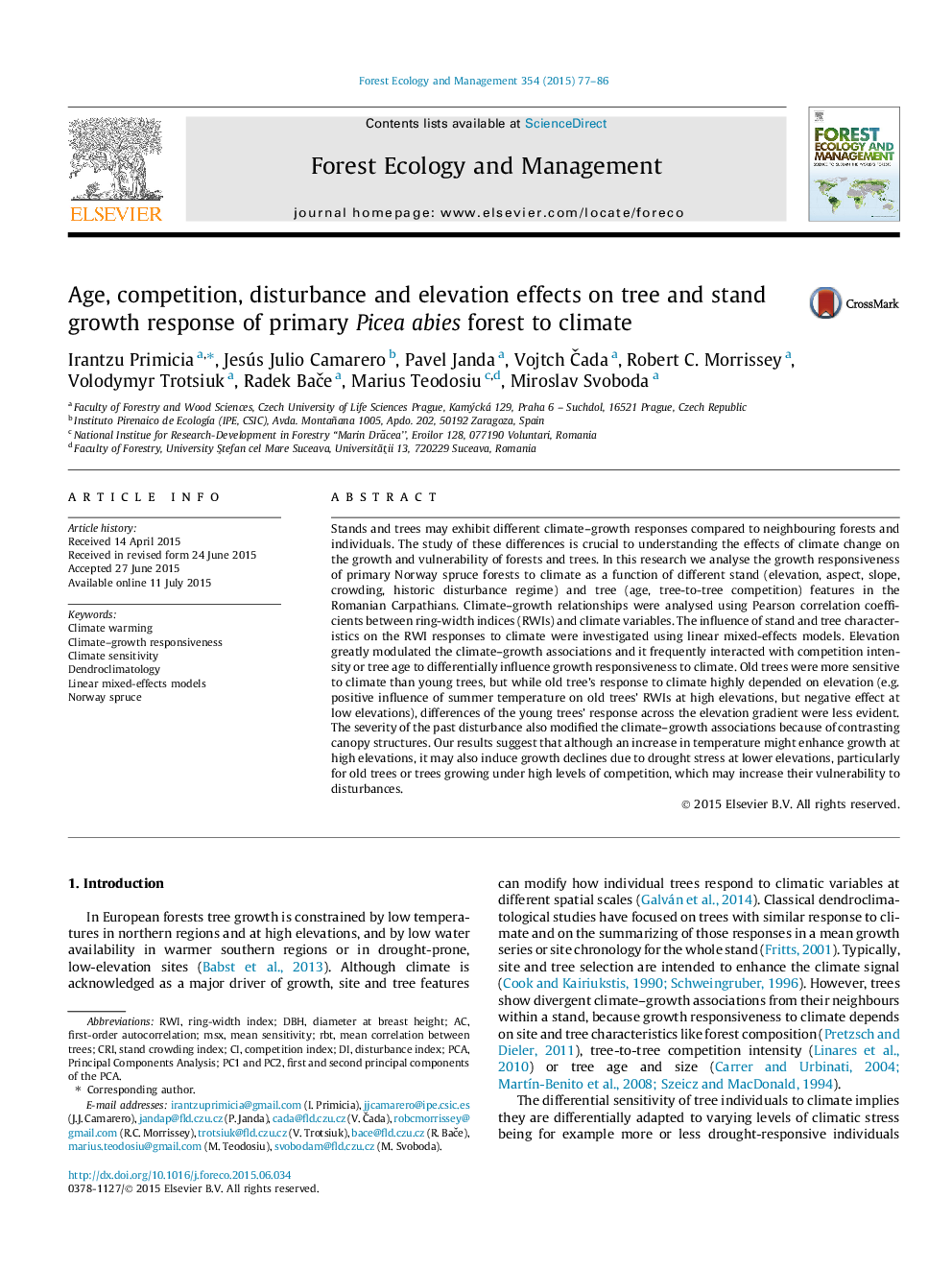| کد مقاله | کد نشریه | سال انتشار | مقاله انگلیسی | نسخه تمام متن |
|---|---|---|---|---|
| 86138 | 159168 | 2015 | 10 صفحه PDF | دانلود رایگان |

• We investigated stand and tree features on spruce response to climate.
• Age, competition, disturbance, elevation interact to modify growth–climate response.
• Tree growth was mainly temperature-driven but water availability was also important.
• Old trees and low-elevation dense stands are vulnerable to drought.
Stands and trees may exhibit different climate–growth responses compared to neighbouring forests and individuals. The study of these differences is crucial to understanding the effects of climate change on the growth and vulnerability of forests and trees. In this research we analyse the growth responsiveness of primary Norway spruce forests to climate as a function of different stand (elevation, aspect, slope, crowding, historic disturbance regime) and tree (age, tree-to-tree competition) features in the Romanian Carpathians. Climate–growth relationships were analysed using Pearson correlation coefficients between ring-width indices (RWIs) and climate variables. The influence of stand and tree characteristics on the RWI responses to climate were investigated using linear mixed-effects models. Elevation greatly modulated the climate–growth associations and it frequently interacted with competition intensity or tree age to differentially influence growth responsiveness to climate. Old trees were more sensitive to climate than young trees, but while old tree’s response to climate highly depended on elevation (e.g. positive influence of summer temperature on old trees’ RWIs at high elevations, but negative effect at low elevations), differences of the young trees’ response across the elevation gradient were less evident. The severity of the past disturbance also modified the climate–growth associations because of contrasting canopy structures. Our results suggest that although an increase in temperature might enhance growth at high elevations, it may also induce growth declines due to drought stress at lower elevations, particularly for old trees or trees growing under high levels of competition, which may increase their vulnerability to disturbances.
Journal: Forest Ecology and Management - Volume 354, 15 October 2015, Pages 77–86